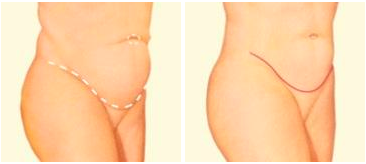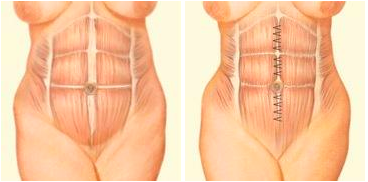ABDOMINOPLASTY (TUMMY TUCK)
A DISTINCTIVELY DIFFERENT PRACTICE
EXPERIENCE EXTRAORDINARY
What is a Tummy Tuck?
A tummy tuck, more formally known as abdominoplasty, is a procedure that is meant to improve the contours of the abdomen. The procedure often involves the removal of excess skin and fat, tightening of the weakened or separated abdominal muscles, and repositioning the belly button (umbilicus). Liposuctions of hips and abdomen, and other areas of the body, are incorporated into the abdominoplasty to achieve the desired result. There are many variations of the abdominoplasty procedure. It is extremely important that you see a surgeon that is skilled in all forms of the procedure to ensure that you undergo the right procedure.
Women often seek abdominoplasty after having children. When the uterus grows to accommodate the growing baby, the rectus abdominis muscles can weaken and separate. After the baby is delivered, the uterus decreases in size; however, the rectus abdominis muscles can stay weakened or separated. The formal term for this condition is rectus diastasis. Women with this condition often report that they still feel like they look pregnant when they protrude their abdomen, even when they are not.
Men and women that have sustained massive weight loss can also benefit from abdominoplasty. These patients often have a significant amount of excess abdominal skin and fat that will not go away, even with further weight loss and/or exercise. In some situations, this excess skin can cause irritation such as rashes or open wounds.
Abdominoplasty is not a substitute for maintaining a healthy weight and exercise program. Ideal candidates for this procedure are women that have completed childbearing and men and women who are at their ideal weight and are motivated to maintain their ideal weight. Significant fluctuations in weight can dramatically change the postoperative results.
FAQ’s







